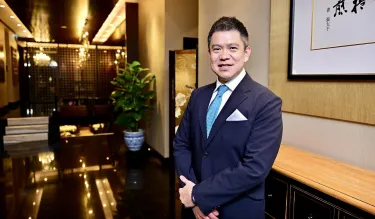Motivation: How Can You Foster It to Achieve Goals?
Help your team set and reach goals by understanding what makes or breaks motivation, and how to best sustain it.
March 24, 2023

Illustration by: iStock/akinbostanci
Achieving goals is critical to a team’s – and organization’s – success. As a leader, it’s clear that you need to be able to motivate your team to help them meet their goals. What’s not always clear, however, is what drives motivation and how you can effectively cultivate it in your team.
Szu-chi Huang is an Associate Professor of Marketing and R. Michael Shanahan Faculty Scholar at Stanford Graduate School of Business who also teaches in several Executive Education programs. Huang’s research focuses specifically on motivation science and shared goal pursuit. Her work offers valuable insights into how to effectively wield the power of motivation to set and achieve goals.
Needs and Emotionality Drive Motivation
In order to influence people’s behavior, it’s crucial to try to understand and meet their needs. Emotionality is closely tied to this. When people’s needs are met, they’re happy and full of positive emotions; if needs go unmet, the negative emotions come out. “Recent research shows that emotionality is really key to all our decision making,” Huang explains.
It’s also important to realize that needs can be multi-layered. If your company makes running shoes, for example, you’ll want to consider not only your customers’ physiological needs, but also their self-esteem needs, social needs, and self-actualizing needs when developing your product.
Meeting your employees’ needs may look a little different, but the same principle applies. Ensuring resources are available to complete a project, supporting career development, and providing a comfortable and equitable work environment, for instance, will help keep your team’s positive emotions — and motivation levels — high.
Motivation is Dynamic
It’s common for people to think of motivation as static, but it’s not. Huang’s research shows that one structure or system will not motivate everyone equally, nor will it motivate the same person the same way all the time.
As a leader, it’s important to know your team and their needs so that you can tailor your motivational strategies to adjust for personality, skill level, the task at hand, and timing — such as the beginning and the end of the quarter. According to Huang, dynamic feedback is critical for sustaining motivation, and your message will resonate even more if you connect it to your own experience.
Keep Motivation High with a Little Friendly Competition
“We know that competition increases motivation,” Huang says. “It makes attaining a goal more valuable.” Huang’s research shows that both winning and losing can drive motivation, but at different phases of the competition.
In the beginning, people need to see that the competition is winnable and that they have a chance of achieving the goal. Early confidence keeps people engaged, which is why setting an attainable goal is crucial. As the competition progresses, a feeling of winning can actually hinder motivation. While the person or team that’s behind is motivated to catch up, the person or team in the lead might start to relax or lose interest. In this case, changing the benchmarks for the high-achievers can give them something to strive for and keep them motivated until the end.
This applies to competitions in teams and organizations as well, so think about your team’s goals and be creative. Have your team compete against each other, a different department, or try to beat their own previous metrics. There’s no “wrong” approach as long as the rules are clear and intentions are positive.
Put These Insights Into Action
As a leader, you have control and can drive your team’s motivation. Here are some best practices to keep in mind:
- Work to identify, understand, and meet your team’s needs to keep emotions positive and motivation high.
- Set attainable goals. Offer encouraging feedback especially in the early stages of a project to keep everyone engaged.
- When communicating with your team about goals, tailor your message according to the individuals, circumstances, and timing, and adjust as often as needed.
- Use competitions to increase motivation levels, but remember to change benchmarks so people don’t give up or relax too early.
- Encourage your team to think of goals not just as destinations, but as a journey. Review what they did right to achieve the goal so these practices can be repeated and sustained in the future.
Explore More Stories
Strategic (Re)Thinking: Is Your Approach to Organizational Strategy Holding You Back?

Inspiring Change: An Insider’s Look at LEAD Me2We

Giving Ex-Offenders a Second Chance at Life
